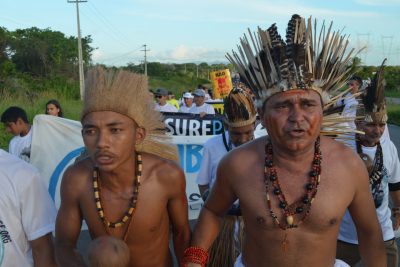Coronavirus Threatens Indigenous Peoples in the Amazon

The effects of the global pandemic of the new coronavirus on large cities are well known and occupy the news all over the world. However, little is said about infection in rural areas and among isolated peoples. In South America, where a large part of the planet’s indigenous populations still live, the virus is posing a real threat to the existence of these peoples, with the rapid spread of the infection and a high mortality rate.
In the Brazilian state of Amazonas – the largest in the country and with the largest indigenous population – the pandemic is doing real damage. The state already has more than 10,000 confirmed cases and more than 800 deaths. More than 90% of the municipalities in Amazonas already have confirmed cases. It is speculated that there will be more than 1,200 dead by the next Tuesday. It is also worth remembering that Brazil has a very serious underreporting situation, according to which some scientists say there are 12 unidentified cases for each infected person reported. The scenario is truly catastrophic, with the state of Amazonas having already recorded the complete funerary collapse.
Official data point to “only” six deaths of Brazilian Indians by coronavirus so far, in addition to dozens of confirmed cases of infection – 95% of the cases recorded in Amazonas. However, the situation is a real time bomb. There is very little left to trigger the catastrophe. The state of Amazonas is home to the largest Brazilian indigenous city, São Gabriel da Cachoeira, where 23 different indigenous ethnicities live and where the infection has already arrived. The geographic conditions of the state and of the entire Amazonian forest are extremely unfavorable to the management of a biological risk, especially when we take into account the terrible public health structure in Brazil: the treatment unit closest to São Gabriel da Cachoeira – city that has the same size as Bulgaria – is more than 850 kilometers away from the municipality. Once the disease has reached the site, it is predictable that in a few days it will spread and jeopardize the survival of more than 20 indigenous ethnic groups, as they will not be able to count on close and accessible medical treatment.
The situation of Brazilian Indians is also dire in other states. The first death in indigenous communities was recorded in the state of Roraima; it has been the case of a young Yanomami Indian, only 15 years old, infected by white illegal prospectors who had invaded the lands of his people. The neglect with which the Brazilian State historically treats native peoples now has its highest point. This is not the first time that deadly diseases have been brought to indigenous communities by people from outside them. Previous epidemics, such as flu, malaria, yellow fever and dengue, have wiped out thousands of Indians over decades, having been introduced into indigenous villages through illegal invaders who were never punished for their crimes by the State, which remains inert in the face of the genocide of native peoples. These peoples have, in general, little immunity to diseases from outside their housing zones, being easily exterminated by small infections, such as the influenza virus. What about something as devastating as COVID-19?
The problem is not restricted to Brazil. In Colombia, there are more than 300 dead. In the municipality of Letícia, the southernmost city in the country, there are already 13 fatal cases, including António Bolívar, an internationally recognized indigenous actor. The infection reached the region through Brazil, due to the large flow of people on the border. As an answer, Colombia closed its borders, however, in practice, this is an extremely difficult measure, since, in the middle of the dense forest, the demarcation of the territory of each country is not perfect. In Ecuador, where 1,600 people have already died from COVID-19, the Siekopai ethnic group – which has about 700 members – has already confirmed dozens of cases, with two deaths of community leaders due to the disease.
The quarantine and social isolation measures have already reached indigenous communities; however, they are being imposed in an incorrect way, which can aggravate the situation. The Indians are being isolated in their villages, prevented by armed patrols from moving through the forest. The result of this type of policy is an increase in hunger and the emergence of a new difficulty, not the solution to the virus. The correct thing to do would be to eliminate the presence of mining companies, oil companies and all forms of foreign and non-indigenous presence in these regions, considering that the focus of the infection is still outside the Amazon and that the first cases among the indigenous people were due to transmission through contact with non-indigenous people. The presence of people from outside the villages should be restricted to essential medical and professional teams, however, the neoliberal governments of Brazil, Ecuador and Colombia remain inert before the performance of exploration companies in the Amazon and thus contribute to the effectiveness of a genuine genocide against native populations.
In a few months, we will see the predictable outcome of the situation that is developing in the Amazon: a social catastrophe, with the extermination of entire ethnic groups by a virus which was carried to the forest by people from outside it. If governments continue to omit, they will be participating in genocide.
*
Note to readers: please click the share buttons above or below. Forward this article to your email lists. Crosspost on your blog site, internet forums. etc.
This article was originally published on InfoBrics.
Lucas Leiroz is a research fellow in international law at the Federal University of Rio de Janeiro.
Featured image is from InfoBrics

